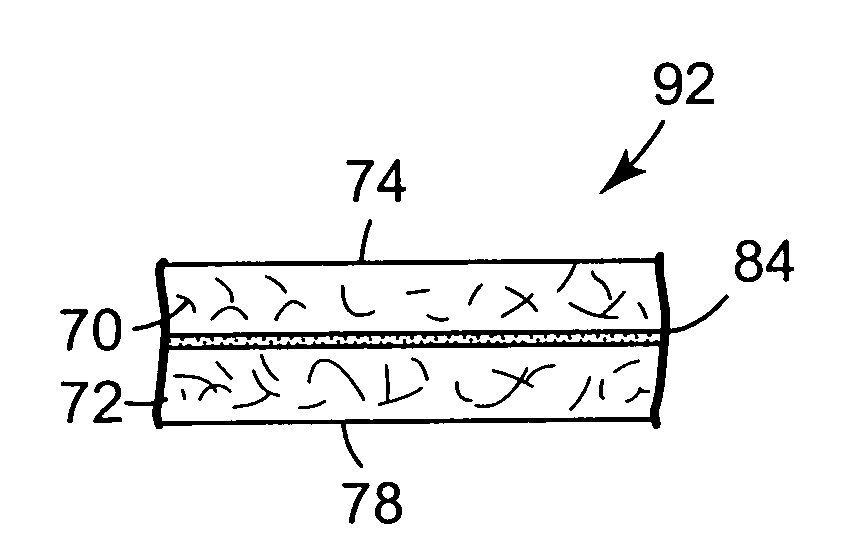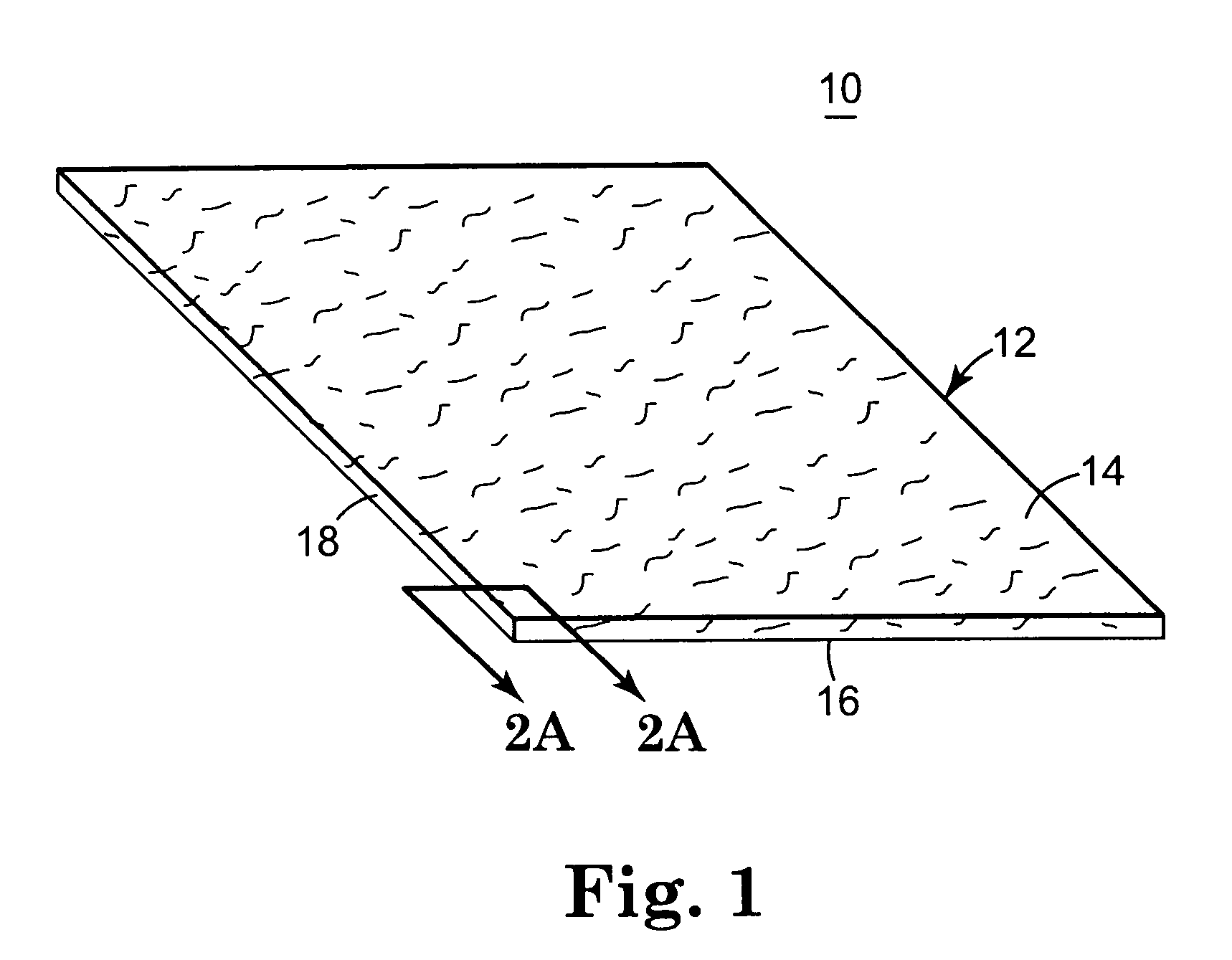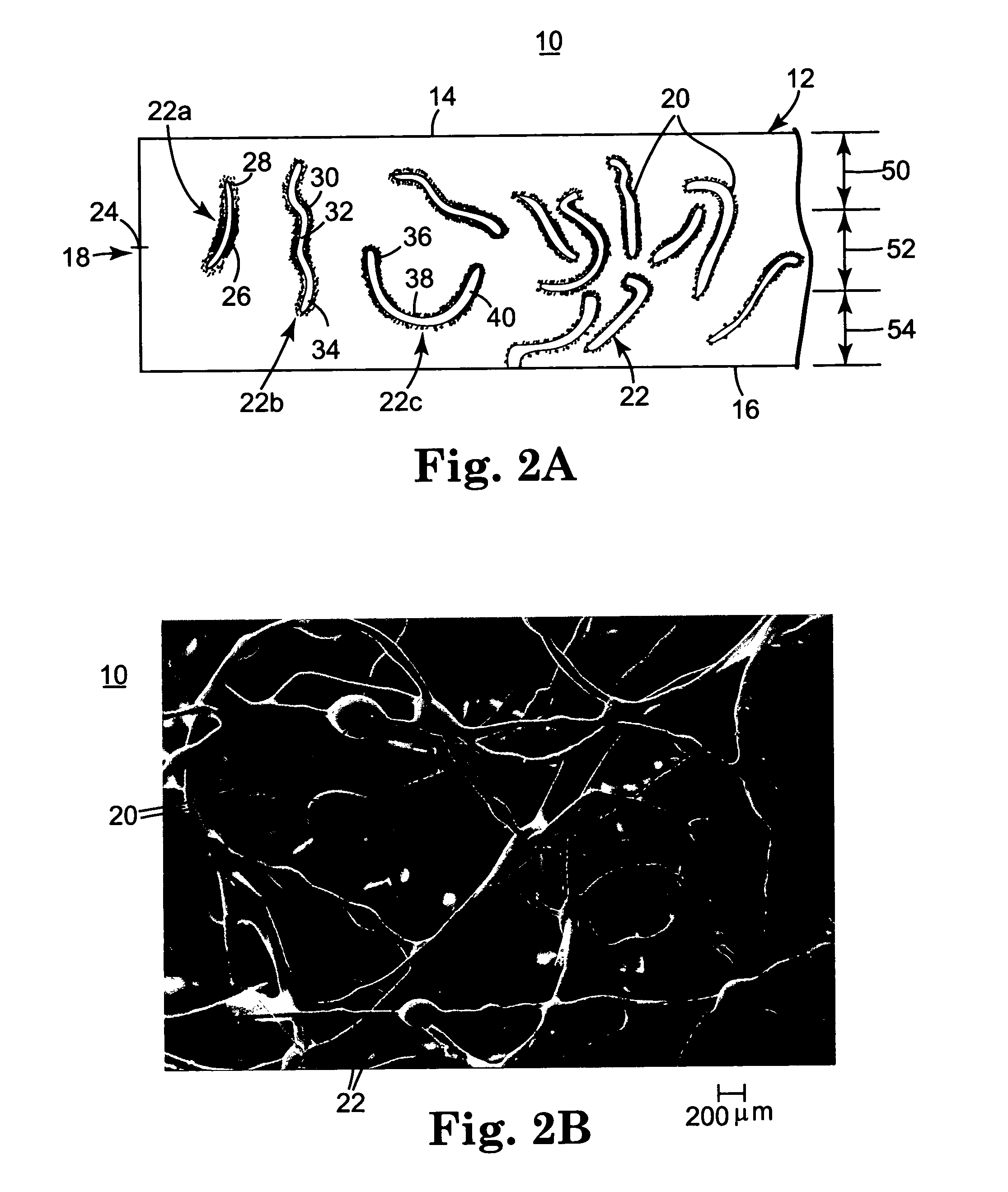Cleaning wipe and method of manufacture
a technology of cleaning wipes and fiber webs, applied in carpet cleaners, weaving, cleaning equipments, etc., can solve the problems of sand, food crumbs, residue on the contact surface, and inability to readily remove larger and/or heavier debris
- Summary
- Abstract
- Description
- Claims
- Application Information
AI Technical Summary
Benefits of technology
Problems solved by technology
Method used
Image
Examples
example 1
[0061]An airlaid nonwoven web was prepared from 32 denier polyester staple fibers and 12 denier bicomponent melty fibers using a Rando-Webber airlaid machine (Model 12-BS, available from Curlator Corp., East Rochester, N.Y.). The weight ratio of the 32-denier fibers to the 12 denier fibers was approximately 4:1. The basis weight of the web was approximately 40 g / m2.
[0062]The web was then transported from the Rando-Webber into a 12-foot long oven using a conveyor belt. The oven had both top and bottom air impingement and was set at a temperature of 350° F. and a line speed of 20 feet per minute, that melted the sheath of the 12 denier bicomponent melty fibers to produce a coherent staple fiber web. The web was then wound into roll form. Two of these webs were then laminated to each other using a hot melt, pressure sensitive adhesive (Type HL-1902, available from H. B. Fuller Company, St. Paul, Minn.). The adhesive was fed using a 4-inch single screw extruder (available from Bonnot Co...
example 2
[0064]An airlaid nonwoven web was prepared from 100 denier polyester staple fibers and 12 denier bicomponent melty fibers using a Rando-Webber airlaid machine (Model 12-BS, available from Curlator Corp., East Rochester, N.Y.). The weight ratio of the 100-denier fibers to the 12-denier fibers was approximately 4:1. The basis weight of the web was approximately 70 g / m2.
[0065]The web was then transported from the Rando-Webber into a 12-foot long oven using a conveyor belt. The oven had both top and bottom air impingement and was set at a temperature of 350° F. and a line speed of 20 feet per minute, that melted the sheath of the 12 denier bicomponent melty fibers to produce a coherent staple fiber web. The web was then wound into roll form. Two of these webs were then laminated to each other using a hot melt, pressure sensitive adhesive (Type H5007-01, available from Bostik Findley, Wauwatosa, Wis.). The adhesive was fed using a 4-inch single screw extruder (available from Bonnot Compa...
example 3
[0067]A carded nonwoven web was prepared from 32 denier polyester staple fibers and 12 denier bicomponent melty fibers using a carding machine (Model M.C., available from Hergeth Hollingsworth, West Germany). The weight ratio of the 32-denier fibers to the 12-denier fibers was approximately 4:1. The basis weight of the web was approximately 65 g / m2.
[0068]The web was then transported from the card machine into a 12-foot long oven using a conveyor belt. The oven had both top and bottom air impingement and was set at a temperature of 350° F. and a line speed of 20 feet per minute, that melted the sheath of the 12 denier bicomponent melty fibers to produce a coherent staple fiber web. The web was then wound into roll form. Two of these webs were then laminated to each other using a hot melt, pressure sensitive adhesive (Type HL-2168, available from H.B. Fuller Company, St. Paul, Minn.). The adhesive was fed using a 4-inch single screw extruder (available from Bonnot Company, Uniontown, ...
PUM
| Property | Measurement | Unit |
|---|---|---|
| mean diameter | aaaaa | aaaaa |
| mean diameter | aaaaa | aaaaa |
| diameter | aaaaa | aaaaa |
Abstract
Description
Claims
Application Information
 Login to View More
Login to View More - R&D
- Intellectual Property
- Life Sciences
- Materials
- Tech Scout
- Unparalleled Data Quality
- Higher Quality Content
- 60% Fewer Hallucinations
Browse by: Latest US Patents, China's latest patents, Technical Efficacy Thesaurus, Application Domain, Technology Topic, Popular Technical Reports.
© 2025 PatSnap. All rights reserved.Legal|Privacy policy|Modern Slavery Act Transparency Statement|Sitemap|About US| Contact US: help@patsnap.com



